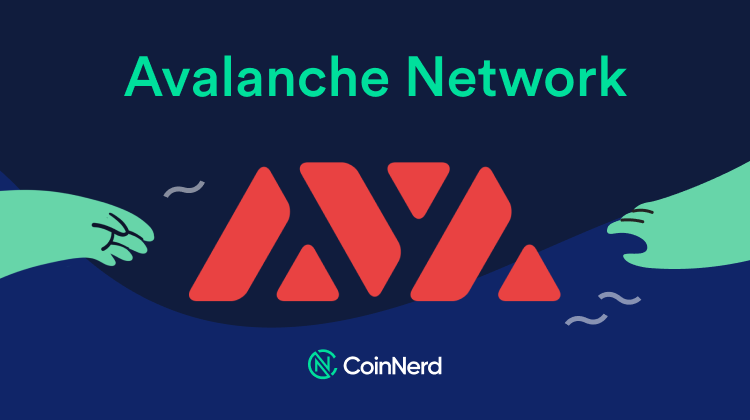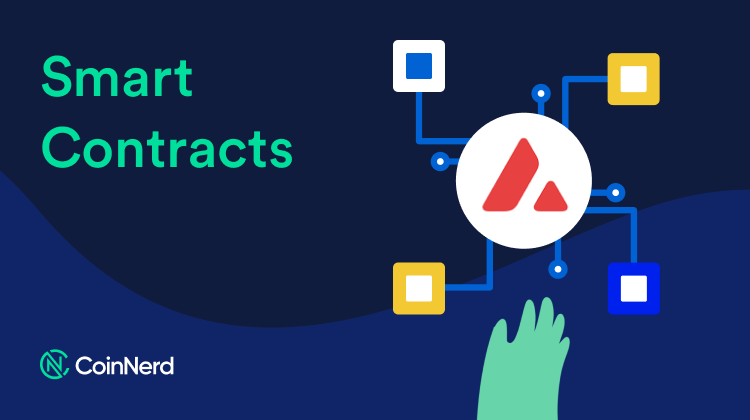What Is Avalanche (AVAX) – With Its Strategic Subnets, Will Explode?
The launch of Ethereum ushered the age of smart contracts in the crypto-verse. But for all its success, Ethereum has become slow, energy-intensive, and expensive to use. There was a growing need to provide an alternative.
A smart contract platform that would deliver fast transactions, low gas fees, and above all, scalability. This is what led to the rise of Avalanche (AVAX), a smart contract platform that hopes to rival Ethereum and offer users a more efficient alternative. In this post, we are going to learn more about the project, how it works, and some of the features that it offers.
What is Avalanche (AVAX)
Avalanche (AVAX) is an open-source blockchain project that offers highly scalable smart contracts. It is designed to provide a seamless connection between developers and the average user.

The network is super-fast, in fact, according to current estimates, over 4500 transactions can be completed on the chain in one second. Also, unlike Ethereum, Avalanche offers low gas fees and high scalability.
How Avalanche Can Explode with Its Subnets
One thing that sets Avalanche apart is its subnets. Now, there are three blockchains built into the Avalanche ecosystem. These include the Platform Chain, also known as the P-chain, the Exchange Chain or the X-chain, and the Contract Chain, also known as the C-chain.
The X-chain was created as a dedicated decentralized platform where people can trade a wide range of digital assets. The P-Chain on the other hand is the overall metadata chain designed to coordinate all the validators on the entire network. The P-chin also governs all custom subnets within the network and provides the tools needed for new subnets to be created. It is by far the most important of the three built-in chains within the Avalanche ecosystem.
And then there is the Contract Chain which coordinates the smart contracts. in essence, Avalanche was created to offer multiple functionalities within a single blockchain. But it gets even more interesting. Individual users can also create their custom subnets and run them within the Avalanche network using unique validators.
Why are Subnets Crucial in the Blockchain Revolution?
The biggest challenge with blockchains is that over time, they become these huge monolithic networks with loads of congestions. Ethereum is a prime example of how to increase usage may limit scalability and growth. Subnets address this. They allow for the creation of isolated blockchains within a much bigger network.
Subnets operate independently based on the rules and requirements set by creators. They are therefore isolated from the congestion of the main network, giving them better speeds and low fees. Subnets can also be customized to meet the needs of various DApps. This means that developers on Avalanche can be versatile with their creations and unleash outstanding innovation using subnets specifically made for their apps.
It is also worth noting that the Avalanche subnets are stimulating the development of private blockchains. These subnets are lowering the cost and technical expertise needed to create a private blockchain. This is likely to usher in a new era of true decentralization where average users take full control of their chains.
Blockchain hegemony is a dying trend. Even big chains like Ethereum are shifting gears towards creating scalable solutions with Ethereum 2.0. But Avalanche is already leading the way in this. It could be a decisive factor in the future growth of the AVAX network.
Incentive Programs for Avalanche Subnets
The Avalanche Foundation knows all too well the power of its subnets. It is now incentivizing developers to use this feature with a new $290 million fund. The program, which is dubbed the “multiverse”, is designed to provide financial support and incentives for developers to create and run subnets for their DAPPs on Avalanche.

The fund is targeting a wide range of projects including NFTs, play-to-earn games, and DeFi products as well. The incentive program also appears to be working. Just recently, a new blockchain game called “DeFi Kingdoms” has launched on Avalanche using these custom subnets. The project received up to $15 million in incentives from the Avalanche Foundation. We expect more and more projects to leverage this $290 million fund and get onboard as well.
The Trader Joe Project – Is Its Value Underestimated?
In addition to the Subnets, another project to watch out for on the Avalanche Network is Trader Joe. It’s a relatively undervalued project but the underlying fundamentals are quite incredible. Here are some details:
What Is Trader Joe Crypto?
Trader Joe is a decentralized exchange or DEX that allows peer-to-peer crypto trading. The DEX uses an automated market marker protocol (AMM) atop the Avalanche chain. It allows users to exchange crypto assets in a permissionless and noncustodial manner.
In essence, this means that there are no third parties involved in the transactions and you are always in control of your crypto assets. DEXs are often secure and less costly compared to centralized exchanges like Coinbase, Binance, and others.
Is Trader Joe’s Value Underestimated?
As noted above, Trade Joe is by far one of the most underrated DEX, especially when you look at the valuations against the turnover. After revenues picked at $2.5 million in November last year, Trader Joe has seen a slump in recent months. As of now, the overall turnover for the DEX is around $500, 000.
Also, the valuation of Trader Joe stands at $500 million. This means that the DEX is valued at 1000x the average turnover. When you compare this to other DEXs, you start to see how underrated trader Joe is. For starters, Uniswap, one of the leading DEXs on Ethereum, has a 3000x multiple on turnover. Sushiswap has 1800x the turnover while PancakeSwap has a 1300x multiple on its total revenue.
From these figures, it could suggest that Trader Joe still has a lot of potentials to deliver more value in the future. Nonetheless, perhaps one area where Trader Joe falls short is on total value locked or (TVL). TVL represents the total value of crypto assets locked within a given protocol. It indicates investor confidence in that particular project.
As of now, Trader Joe has a TVL of around $1.4 billion. This is way lower compared to, say, Uniswap which has upwards of $7.5 billion in TVL. PancakeSwap on the other hand has around $4.26 billion while SushiSwap has a TVL of around $4 billion. While Trader Joe still has very high potential, we need to start seeing that TVL go up. This will represent a significant move that could push the valuation of this Avalanche DEX to a whole new level.
Conclusion
The Avalanche network was created to address the limited scalability options of Ethereum. It is one of many “Ethereum killers” out there. So far, the project is offering a serious alternative for developers and users.
Its subnet concept is likely going to democratize blockchain technology and unleash a new wave of decentralized innovations. While Avalanche is not as big as Ethereum right now, it has all the right conditions to explode and become a huge player in the smart contracts space.
* We hope this information will help you in your investment process, but this is not investment advice. Every investment carries risk, especially in this industry, so DYOR before making a decision.






